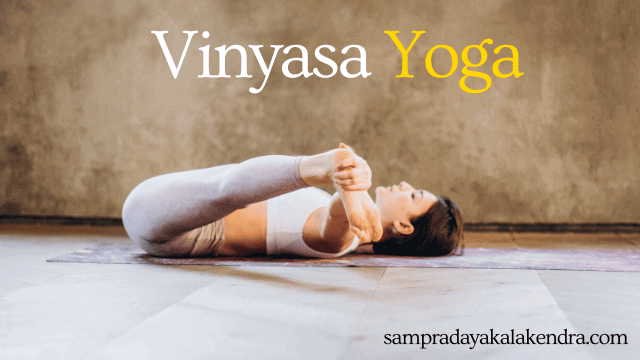
VINYASA YOGA: THE FLOWING HARMONY OF BREATH AND MOVEMENT
Vinyasa Yoga, often referred to as “flow” yoga, is a dynamic practice that synchronizes movement with breath. It is a form of yoga that seamlessly transitions from one pose to another, creating a fluid and continuous sequence. In this article, we delve into the essence of Vinyasa Yoga, exploring its origins, philosophy, benefits, and practical tips for practitioners.
Origin and Philosophy
Vinyasa Yoga traces its roots to the ancient traditions of yoga in India. The word “Vinyasa” can be translated as “to place in a special way,” highlighting the intentional sequencing of poses in this practice. It embodies the concept of “moving meditation,” where practitioners cultivate mindfulness through movement and breath awareness.Enhance your reputation as a leader in the industry through digital marketing write for us and get published on our platform.
The Flowing Sequence
Central to Vinyasa Yoga is the flowing sequence of postures, often guided by a teacher. Sun Salutations, or Surya Namaskar, form the backbone of many Vinyasa classes, serving as a dynamic warm-up and linking breath with movement. The fluid transitions between poses create a sense of rhythm and harmony, fostering a meditative state of mind.
Benefits of Vinyasa Yoga
Vinyasa Yoga offers a myriad of benefits for both the body and mind. On a physical level, it builds strength, flexibility, and endurance, while also improving cardiovascular health. Mentally, the synchronized breathing promotes relaxation, reduces stress, and enhances focus and concentration.
Getting Started with Vinyasa Yoga
For those new to Vinyasa Yoga, finding a suitable class is the first step. Look for beginner-friendly or “all-levels” classes to ease into the practice. As for equipment, all you need is a yoga mat and comfortable clothing that allows for unrestricted movement.
Tips for Practicing Safely
Listening to your body is paramount in Vinyasa Yoga. Honor any limitations or discomfort you may encounter and modify poses as needed. Cultivate breath awareness throughout the practice, using the breath as a guide for movement and intensity.
Common Challenges and How to Overcome Them
Physical limitations and mental distractions are common challenges faced by practitioners. Modifications and props can help adapt poses to individual needs, while mindfulness techniques such as focused breathing can quiet the chatter of the mind.
Advanced Vinyasa Yoga Practices
For those seeking a deeper exploration of Vinyasa Yoga, advanced practices such as arm balances, inversions, and power Vinyasa offer new challenges and opportunities for growth. These poses require strength, balance, and concentration, pushing practitioners beyond their comfort zones.
Incorporating Vinyasa into Daily Life
The principles of Vinyasa Yoga extend beyond the mat, offering valuable insights for everyday life. Embrace mindful movement in daily activities, paying attention to posture and breath. Incorporate breath work into moments of stress or tension, using it as a tool to find calm and centering amidst chaos.
Conclusion
Vinyasa Yoga embodies the harmonious union of breath and movement, offering a pathway to physical vitality and mental well-being. Whether you’re a beginner or seasoned practitioner, the fluidity and creativity of Vinyasa Yoga invite exploration and self-discovery on and off the mat.